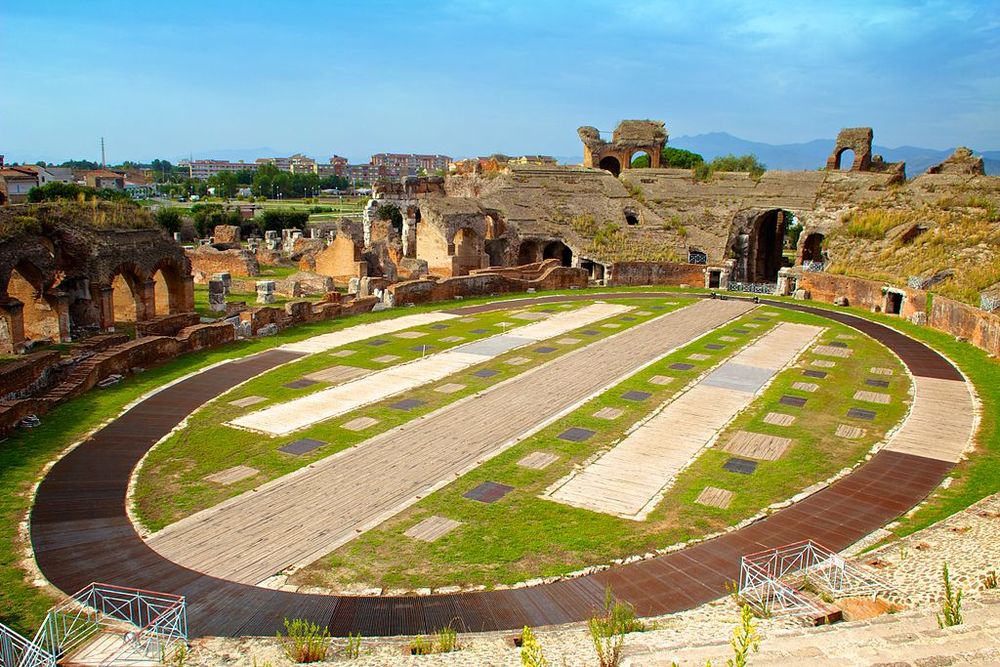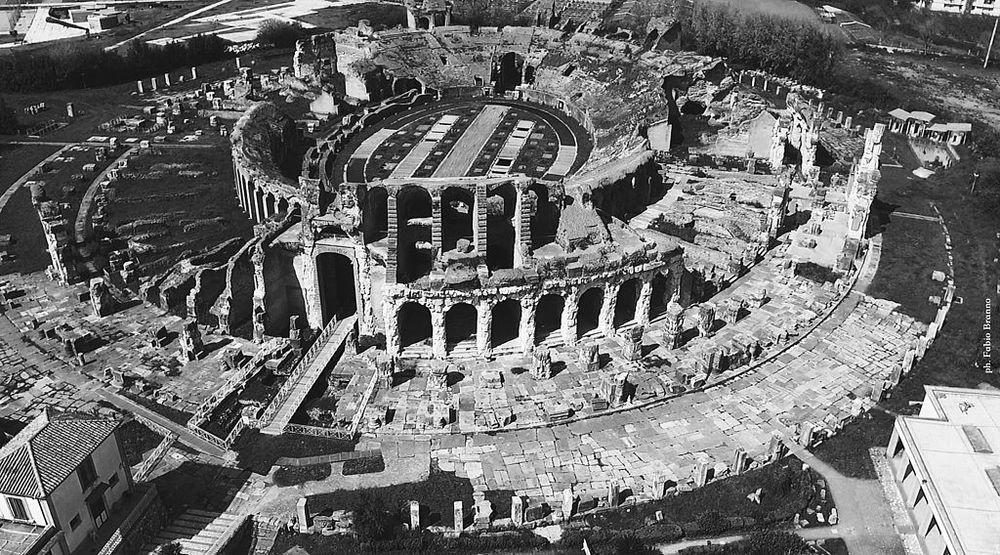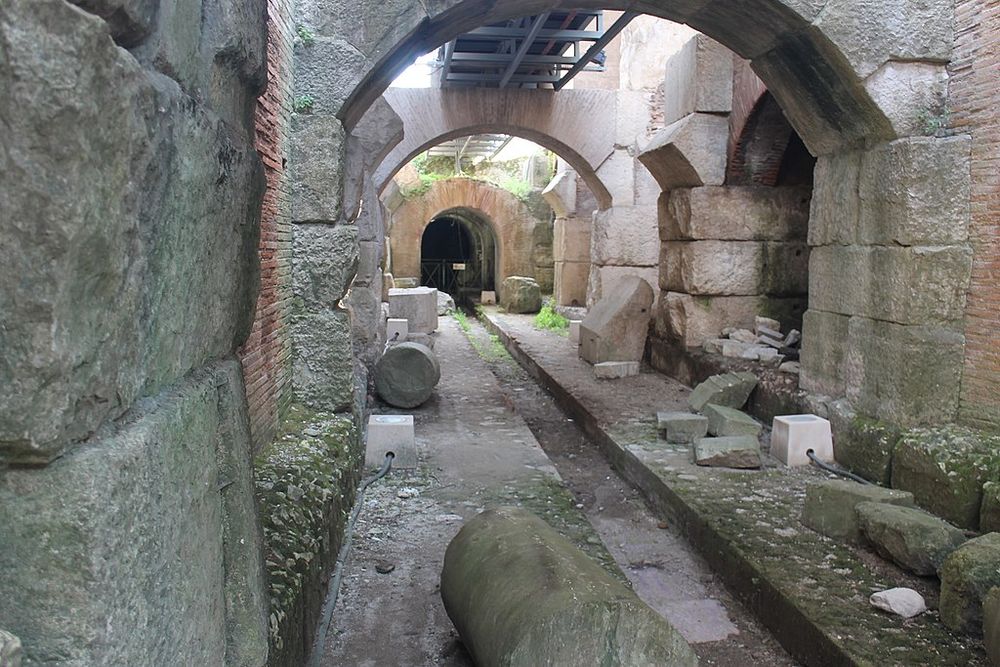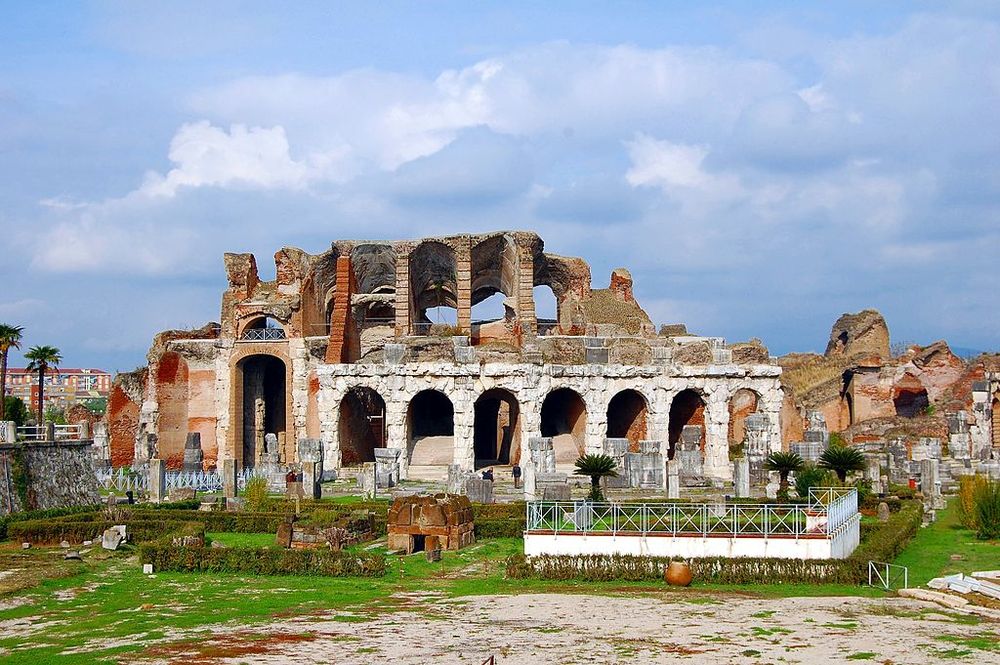Of all the amphitheaters built by the Romans, the Colosseum or Flavian Amphitheater in Rome is the largest of all in dimensions, followed by the amphitheater of Capua, Pozzuoli, and El Djem (already in Tunisia, which is also the largest of Africa). However, it is not the oldest, since that honor belongs to the amphitheater of Capua.
Not only that, experts believe that it could even serve as a model for the Colosseum, as it shares many structural characteristics with it, and the rest of the amphitheaters. It should be clarified that we are referring to amphitheaters built in stone, since previously they were built of wood.

Photo: Nicola D'Orta/Wikimedia
The amphitheater is located in the ancient city of Capua, Italy, which was not where the current modern city of the same name is located, but in the neighboring municipality of Santa Maria Capua Vetere, and which became the second largest and most prosperous city in the Italian peninsula after Rome. Curiously, the town was called Santa Maria la Mayor until 1861, when the archaeological excavations that brought to light the old Capua caused the name change.
The amphitheater has an elliptical plan and measures 170 meters in its major axis, by 139 meters in the minor. The facade reached a height of 46 meters, divided into four levels, the lower one in the Doric order and the others in the Tuscan order. The lower three were made up of 80 travertine arches, decorated with the bust of a god in the keystone (the central stone of the arch). Seven of these busts are preserved incorporated into the Municipal Palace.
The upper level was formed by a wall decorated with pilasters between which there were windows that illuminated a corridor destined to keep the wake, used to protect the spectators from the sun and bad weather (and which was managed by sailors from the fleet). The arcades on the first floor gave way to a double open portico, supported by pillars and covered with vaults.

Photo: Fabiobranno/Wikimedia
The arena has the same dimensions as the Colosseum in Rome, with 76.29 meters long by 45.93 wide. The subsoil is labyrinthine, intact and made up of brick pillars that support the vaults on which the arena rests.
The cages in which the wild animals were kept are still clearly visible, as well as the service galleries and the freight elevator system leading to the hatches, which is well preserved.
It had a complex network of sewers, which turned the amphitheater into a gigantic impluvium in which the water collected in the cavea was channeled into a cistern installed outside. At the same time, an aqueduct provided the necessary water for the maintenance of the building.
The amphitheater had a capacity for between 45,000 and 50,000 spectators, with seats divided into low (on the podium), middle (in the marble stands) and high. This large capacity and the large movements of the public at the beginning and end of each event led the architects to provide the amphitheater with a double gallery for peripheral circulation on the ground floor, a feature that it shares only with the Colosseum.

Amphitheater undergrounds. Photo: Saverio.G/Wikimedia

Photo: jimmyweee/Wikimedia
The first and most famous school of gladiators in the Roman world was installed there, owned by the lanista Lentulo Batiato, who mainly had Gallic and Thracian gladiators.
The exact date of its construction is unknown, but the sources already mention it when speaking of Spartacus, the famous gladiator who led a revolt from the Capuan amphitheater in the year 73 BC (There is no evidence to prove it, but it is very likely that Spartacus will fight in the arena of the amphitheater of Capua).
However, some historians believe that the current building was actually built at the end of the 1st century BC on the ruins of the previous one. If this hypothesis were correct, the oldest Roman amphitheater would be that of Pompeii, built in 70 BC.
This hypothesis is supported by an inscription found at the entrance to the amphitheater in 1726, which places its construction in the time of Augustus. According to that inscription, it was later restored by Hadrian in AD 119, who added statues and columns to it, and was consecrated by Antoninus Pius in AD 155.

Photo: Dom De Felice e Carla Nunziata/Wikimedia
Gladiatorial fights were banned by Emperor Honorius in 404 AD, although the amphitheater continued to host wild beast shows. After the fall of the Empire, Genseric's vandals considerably damaged the building in 456 AD, just as the Saracens would later do in 841. Much of the amphitheater's stones were reused in Norman times to build the Castello delle Pietre and other buildings in the city, such as the Duomo and various palaces.
The large stone blocks were broken for the bronze and lead that held them together, and the smaller stones were used to pave the streets. The conservation of the complex only began with the declaration of National Monument by King Francis I of the Two Sicilies in 1826, who ordered the cleaning and excavation of the amphitheater under the direction of the royal architect Bianchi.
This article was originally published in La Brújula Verde. It has been translated from Spanish and republished with permission.












Comments
Post a Comment